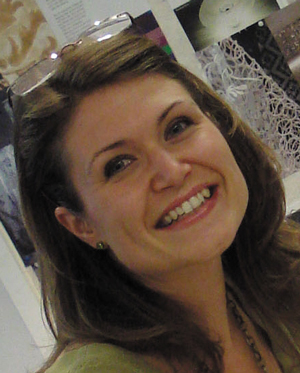InterfaceFLOR, discusses some simple tools to help contractors deliver flooring solutions
13 July 2012
InterfaceFLOR, discusses some simple tools to help contractors deliver flooring solutions that meet even the trickiest of briefs.
Often, when you first meet with a customer, they will already have a very specific idea of what they want to achieve through their design project, and the flooring design will play an essential part helping them to fulfil this vision.
Ultimately, customer satisfaction is the most important consideration of any project. Therefore, when it comes to fulfilling your client's flooring requirements, it's vital to think creatively about the solution and also consider how you will present it to them in order to ensure that their expectations are outlined from the very beginning of a project.
If your customer has a very specific design requirement that isn't completely fulfilled by an off-the-shelf product, it's important to consider that a good manufacturer will offer the option of tailoring and adapting existing ranges to create bespoke solutions.
It may be that you've been instructed to reflect corporate colourways through the flooring, but cannot find an existing match in your chosen range. However, when it comes to carpet tiles, this need not be an issue. At InterfaceFLOR, we can work with you to change the yarn colours in our standard products to emphasise branding, create complementary designs to create zones, or even coordinate flooring with existing interiors.
What's more, the brief may require you to match a new product to the existing flooring. In this case, the same technology can be applied to create recolourations of our tufted ranges if your customer just wants to update part of the room, or the building.
Even when it comes to an off-the-shelf product, there is an array of possibilities for installation that can completely change the look and feel of a design. The installation method will have a huge impact on appearance, as shapes can be cut into an existing flooring solution to add interest.
The main laying patterns are quarter turn, monolithic, brick, ashlar and non-directional:
• Quarter turn: In this design, carpet tiles are turned 90 degrees to one another. Also known as a chequer board or tessellated effect.
• Monolithic: This is when the tiles are all laid in the same direction so the pattern is continuous.
• Brick: To achieve this effect, tiles should be laid in the same direction, but the tile bond should be displaced by half a tile in the width direction.
• Ashlar: Similar to brick, however in this instance, the tile bond is displaced by half a tile in the length direction.
• Nondirectional: To create this effect, tiles should be installed without regard to direction and orientation.
There's nothing worse than investing money in something for the end result to fall short of your expectations. So it's important to think about how you will help your customer visualise the design and the product that you're suggesting at the start of the project.

By working directly with our design team, you can develop an individual scheme and view it on screen. If you're creating a bespoke design with different colours and tailored products, this enables you to drop your selection into a room set so that you can ensure that it meets your customer's vision.
Even if your client has opted for a simple flooring solution with only one or two products, seeing it in-situ can really help bring the concept to life, ensuring that they are happy with their choice before you invest in the project.
Nowadays, we're relying a lot less on tools such as shade cards to demonstrate a product to customers and instead embracing the wealth of digital technology available. Using online design tools can quickly and conveniently put a solution into context for a customer and help you to provide a more efficient level of service to customers during the specification process.
At InterfaceFLOR, one of the tools that we offer is an iPad app, which features a floor designer tool. Using technology such as this, which utilises high quality images that capture the vibrancy of colour and intricate design details of the carpet tiles, is a convenient way of cost-effectively trying different options out.
Particularly in such a competitive economic climate, we all need to ensure that we are going above and beyond to demonstrate added value to our customers. By providing customers with good advice and guiding them through the specification process you will ensure that they end up with a design that exceeds their expectation.
More news from Remland Carpets